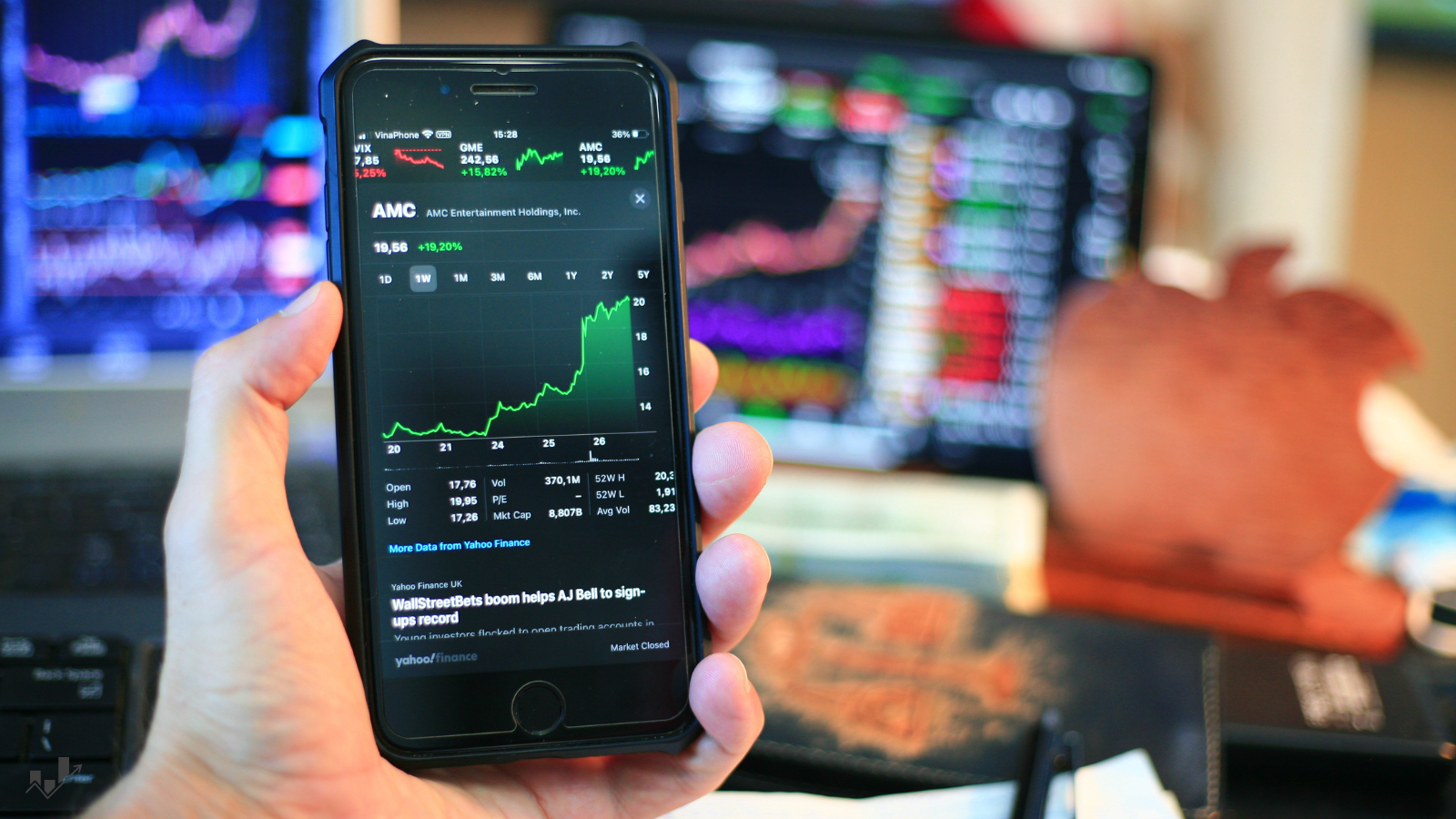Even though market volatility is an inherent part of investing, it doesn’t have to derail your financial goals. By understanding market dynamics, sticking to your plan, and focusing on your long-term goals, you can stay calm and make rational decisions even during turbulent markets. Additionally, you can empower yourself by learning and practicing emotional regulation techniques, consulting professionals, and learning from past market events. Most importantly, remember that market fluctuations are temporary but the financial benefits of long-term investing are enduring.
1. Understand Market Volatility
Market volatility is the frequent and often sharp shifts in asset prices over a short period of time. This volatility can be triggered by a variety of factors, including geopolitical events, economic indicators, and investor sentiment. For example, the CBOE Volatility Index (VIX) or “fear index” tends to spike during times of (geo)political and economic uncertainty and reflects higher market anxiety.
Historically, markets have experienced significant downturns and demonstrated resilience. The S&P, for example, has delivered an average annual return of about 10% since about 1926 despite periodic downturns. By understanding that the market will be volatile for short periods, you can prepare yourself to avoid emotional or knee-jerk reactions that may lead to hasty decisions.
2. Stick to Your Investment Plan
A well-designed and diversified investment plan acts as your anchor during market volatility. Your portfolio should include diversified assets and be tailored to your risk tolerance, financial goals, and time objective. Diversified portfolios, which include investments across asset classes, boast lower volatility than portfolios focused on a single asset type because the mix of stocks, bonds, etc. can help cushion the impact of a market downturn.
When the market turns volatile, an investment plan and diversified portfolio help you resist the urge to deviate from your overall strategy. Selling during a downturn locks in your losses, while staying invested allows you to benefit when the market recovers.
3. Focus on the Long-Term
While market volatility can seem alarming, this volatility is historically short-term and markets recover over the long-term. For example, investors who remained fully invested in the S&P 500 from 2002-2022 saw an annualized return of 9.65%. In contrast, those investors who missed the market’s 10 best days during that period saw their returns halved.
By focusing on your long-term goals rather than the short-term fear, you can avoid making impulsive decisions that might lead to missing out on financial gains.
4. Avoid Constant Monitoring
It’s understandable to want to know what’s happening with your investments, but watching your portfolio value fluctuate daily can heighten your anxiety and fuel impulsive decision-making. Instead, consider setting specific intervals to review your investments. Investors who check their portfolios less frequently tend to have lower stress levels and tend to make less reactive changes.
Turn off your non-essential notifications and even avoid financial news during turbulent times to help maintain a sense of calm even amidst volatility.
5. Reframe Your Perspective
Instead of viewing market volatility or a downturn as a threat, try to reframe your perspective and see them as an opportunity to buy quality assets at lower prices. For example, during the 2008 financial crisis, the price of many high-quality stocks dropped significantly which created opportunities for long-term investors to buy in. Those who invested in the S&P 500 at its lowest in 2009 saw a cumulative return of over 400% by 2019.
Famously, Warren Buffett once said that we should “be fearful when others are greedy and greedy when others are fearful.” This quote emphasizes the importance of reframing volatility as an opportunity to help you make more rational decisions.
6. Practice Emotional Regulation
In life and in investing, managing your emotions can be difficult; however, managing your emotions is the key to staying calm even during market turbulence. Techniques such as mindfulness, meditation, and deep breathing can help reduce your stress and ultimately improve your decision-making. You could also keep a journal to document your feelings during a turbulent time and then compare them to the market reality. You might find that your fears were overexaggerated compared to reality.
Mindfulness practices such as these can enhance your cognitive control and reduce emotional reactions to stress. By cultivating emotional resilience, you can better navigate market volatility.
7. Consult a Financial Advisor
If you are feeling particularly uncertain and unsteady during a period of market volatility, consider consulting a financial advisor for guidance. These advisors can help you reassess your portfolio, reinforce the importance of your investment plan, and provide perspective on the market trends.
Investors who work with advisors report higher confidence in their financial decisions and are more likely to stay invested even during market downturns. In addition to controlling your own emotions and emotional reactivity, an advisor adds an additional buffer between your emotions and your investment decisions to make sure that your actions align with your goals.
8. Understand Risk and Reward
Even though every investment carries risk, this risk is what drives potential returns. In other words, you need to get clear on your risk tolerance, or the level of volatility you’re comfortable with, so you can choose investments that align with your comfort level. If your portfolio isn’t aligned with your risk tolerance, you might be more likely to panic and sell during downturns which would ultimately lead to less-than-ideal outcomes.
You can better weather the inevitable market fluctuations by understanding and accepting the relationship between risk and reward.
9. Learn from Past Market Events
History provides valuable insights on market downturns and eventual recovery. For reference, during the 2008 financial crisis, the S&P 500 lost over 50% of its value but fully recovered within 5 years. In a similar way, in 2020 the COVID-19-driven market crash saw a quicker recovery and had reached new highs within months.
By reviewing and remembering these events, you can remind yourself of the importance and benefits of staying invested and trusting the market’s resilience.
10. Take Care of Your Overall Well-Being
We don’t exist in a vacuum. Your financial health is tied to your physical and emotional health. Beginning to incorporate physical movement, like exercise, a balanced diet, and adequate sleep can improve your ability to handle stress.
Regular physical activity significantly reduces symptoms of anxiety and stress; so, by prioritizing self-care, you can improve your mental clarity and decision-making during turbulent market conditions.
Conclusion: Navigating Market Volatility with Confidence
Market volatility is an inevitable part of investing, but how you respond to it can make all the difference in your financial journey. By maintaining a calm and disciplined approach, focusing on long-term goals, and avoiding emotional decision-making, you can weather the storms of uncertainty and stay on track toward your investment objectives.
Remember, volatility often presents opportunities for growth and portfolio optimization. Stick to your investment strategy, rely on diversification, and seek professional guidance when needed. By viewing market fluctuations as a normal part of the process, rather than a cause for panic, you’ll not only preserve your wealth but also position yourself to thrive in the ever-changing financial landscape.
Patience and perspective are your greatest allies—stay the course and let time work its magic.
Sing up with SignalXchange Today
Navigating market volatility requires effective tools and strategies. Here are three reasons to consider using SignalXChange to help manage market fluctuations:
- Simulated Trading with Real-Time Data: SignalXChange offers a platform for simulated trading, allowing users to test and refine their strategies in a risk-free environment. With access to real-time market data from exchanges like NYSE, NASDAQ, and more, traders can make informed decisions and adapt to market changes without financial risk.
- Strategy Comparison and Leaderboards: The platform enables users to create multiple trading strategies and compare their performance against others on the leaderboards. This feature fosters a competitive environment and provides insights into successful trading methods, helping users improve their approaches during volatile market conditions.
- Educational Resources and Community Support: SignalXChange is designed for educational and informational purposes, offering resources that allow traders to explore strategies without financial risk. By connecting with knowledgeable traders, users can gain deeper insights into the trading process, learn industry strategies, and build confidence in their trading decisions.
By leveraging these features, traders can enhance their skills and better navigate the challenges of market volatility.



